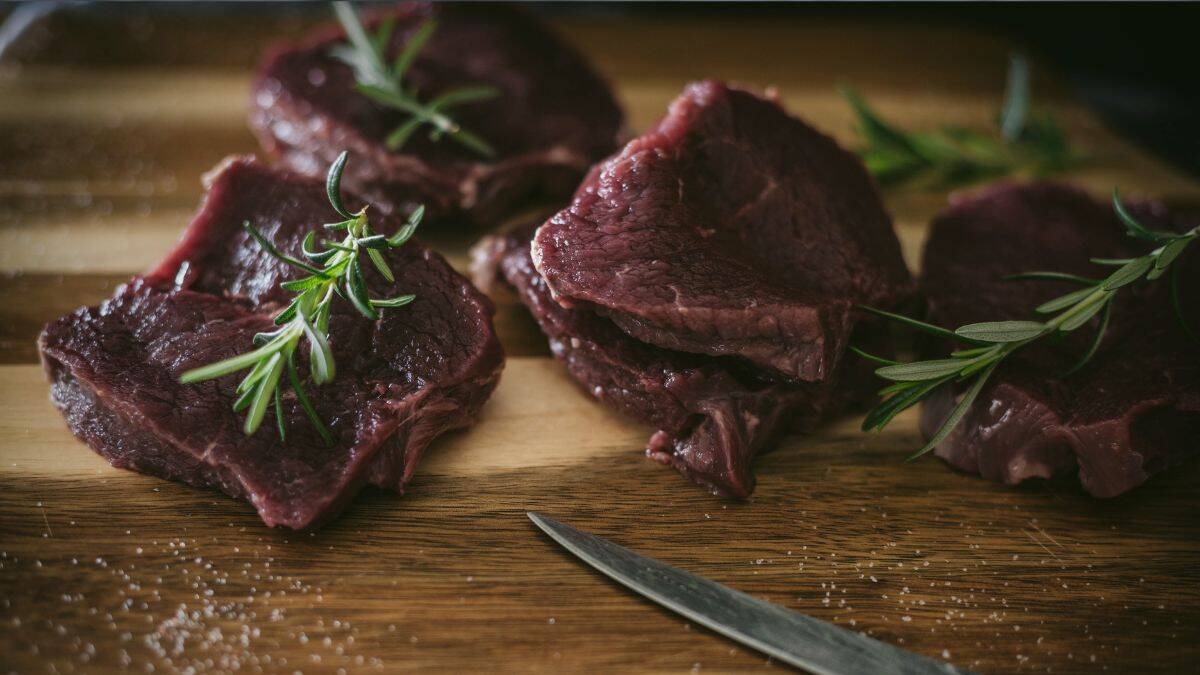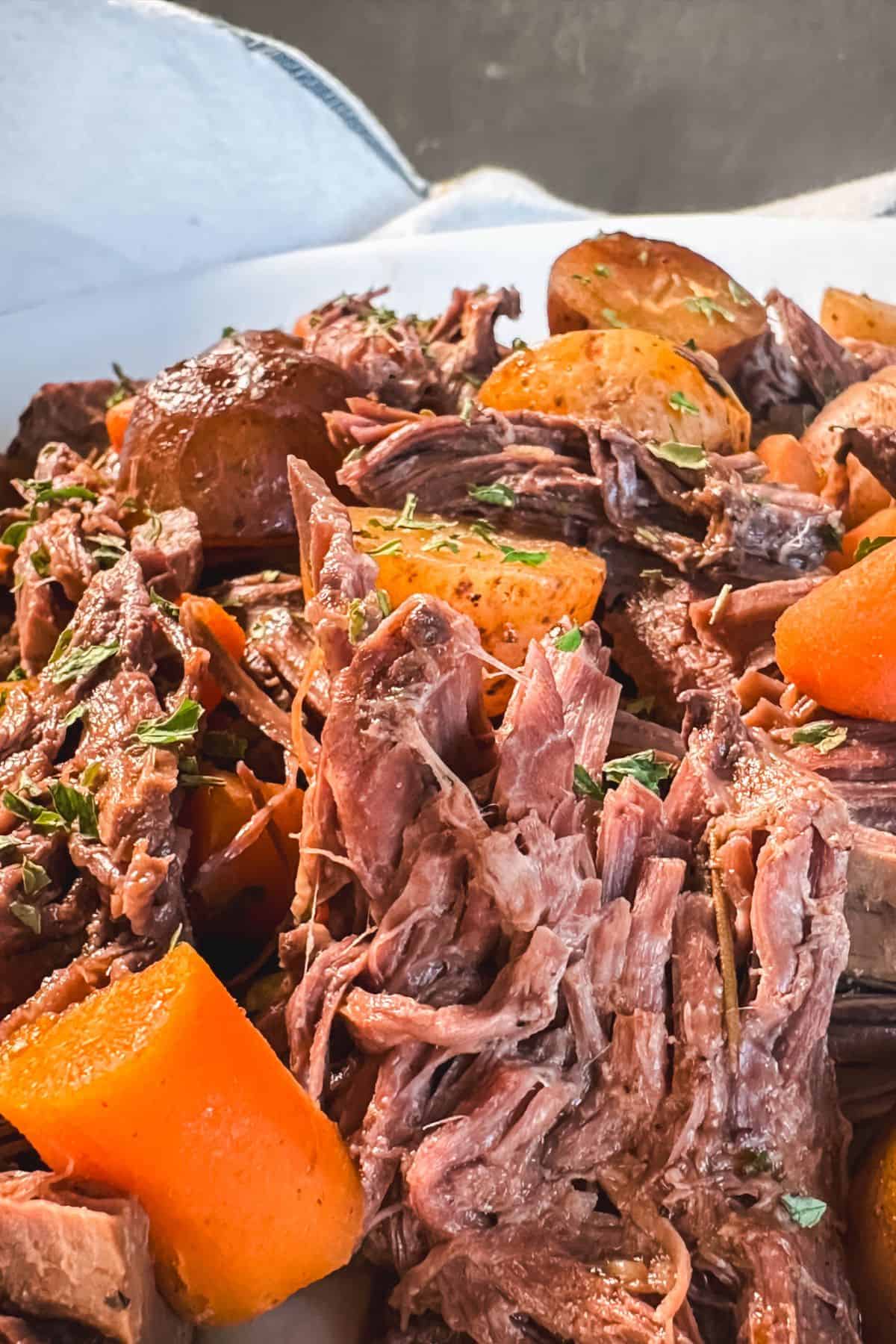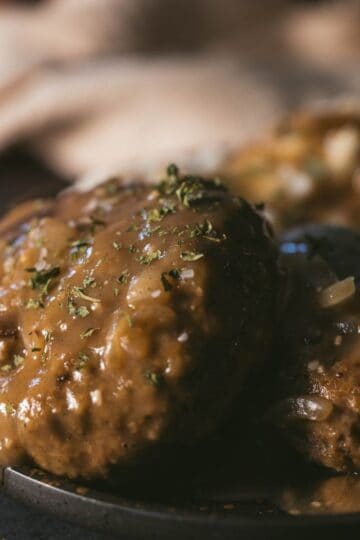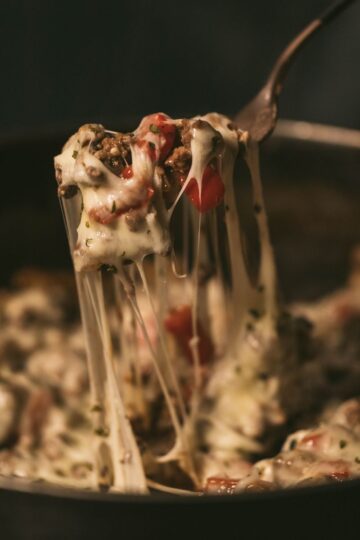Curious how to cook venison so it turns out tender, flavorful, and family-friendly? After years of cooking deer meat, from steaks and roasts to ground venison and sausage, I’ve learned the techniques that actually work (and which myths to ignore). Whether you’re brand new to wild game or just want better results, this guide will walk you through the basics, tips, and recipes to help you cook venison with confidence.

Venison has a reputation... sometimes unfair, sometimes well-earned. It’s lean, rich in flavor, and surprisingly easy to mess up if you don’t know what you’re doing. But once you do? Game changer.
I still remember the first deer my husband brought home. I was pregnant, tired, and absolutely not interested in figuring out what to do with a pile of mystery meat wrapped in butcher paper. I was overwhelmed, skeptical, and totally convinced I’d ruin it.
For a while, I stuck with the same two “safe” recipes. They weren’t anything fancy, but they worked. Eventually, though, I started experimenting.
I began tweaking temperatures, trying new cuts, learning how to actually cook wild game the way it deserves to be cooked. And what I discovered? Venison isn’t just tolerable. It’s delicious... as long as you treat it like its own thing and stop pretending it’s beef.
Venison Is Not Beef (And That’s a Good Thing)

Yes, they’re both red meats. No, they don’t cook the same.
Beef is loaded with fat and marbling, which makes it forgiving. Venison? Not so much. It’s incredibly lean, which means it can go from perfectly cooked to dry and tough in the blink of an eye. The key is understanding the difference, and cooking it accordingly.
What you get in return is worth it. Properly cooked venison has incredible texture, rich flavor, and a stellar nutrient profile. It has more vitamin B6, B12, and Omega-3s than beef, and less saturated fat.
It’s clean, wild protein that (in my opinion) tastes better than anything you’ll buy at the grocery store.
Do You Need to Soak Venison?
It depends. Some folks soak it in buttermilk or saltwater to “remove the gamey taste,” but in my experience, that flavor usually comes from improper field care or overcooking, not the meat itself.
That said, a quick soak in an acid-based marinade (like red wine vinegar or lemon juice) can help tenderize the meat and smooth out any strong notes, especially if you're new to wild game. We'll cover this more below, but it's not a requirement, just a tool in your kit.
How to Cook Venison So It’s Tender and Delicious

There’s no one-size-fits-all method, but here’s a solid rule of thumb:
Tender cuts = hot and fast.
Tougher cuts = low and slow.
Once you understand which parts of the deer you’re working with, everything gets easier (and tastier). Below, I’ll walk you through how to handle each type... from steaks to roasts to ground venison.
Cooking Venison Steak, Backstrap, and Other Tender Cuts

These are the prized pieces... backstrap, tenderloin, and some steaks. You want high heat and a quick sear, cooking them to rare or medium-rare (120–135°F internal temperature) for best flavor and texture. Anything beyond that, and you risk chewing on jerky.
Here’s how I do it:
- Pat the meat dry
- Rub with avocado oil or ghee (helps with browning and adds fat)
- Season simply—salt, pepper, garlic powder, or your favorite dry rub
- Sear in a hot cast iron skillet for 1–2 minutes per side
- Rest before slicing to preserve juices
You can absolutely use marinades, too. Acidic ingredients like red wine vinegar or citrus not only tenderize but add depth to the flavor, especially for folks still on the fence about wild game.
Cooking Venison Roasts, Shanks, and Other Tough Cuts

Tougher cuts, like shoulder roasts, neck meat, or shanks, come from muscles that get used a lot. That means more connective tissue and deeper flavor, but only if you cook them the right way: low and slow with plenty of moisture.
Think braising, slow cooking, pressure cooking, or smoking. These methods break down tough fibers and transform even the chewiest cuts into rich, fall-apart-tender meals.
A few tips:
- Always brown the meat first to build flavor
- Use liquid + acid: broth, red wine, apple cider vinegar, tomato sauce—all work beautifully
- Cook low (275–325°F) and slow (2–4+ hours) for the best results
- Don’t be afraid of aromatics—onion, garlic, thyme, bay leaves, and a splash of Worcestershire go a long way
Great ways to use these cuts:
- Venison pot roast
- Shank osso buco
- Venison stew or stroganoff
- Barbacoa-style shredded deer for tacos
These underappreciated cuts are packed with flavor if you give them the time and treatment they deserve.
How to Cook Ground Venison

Ground venison is one of the most versatile and beginner-friendly ways to use deer meat. It’s lean, flavorful, and can replace ground beef in nearly any recipe with just a couple of tweaks.
Because it’s lower in fat than beef, ground venison can dry out quickly. Most processors will add beef or pork fat (typically 10–20%) during grinding. If yours is extra lean, plan to add some fat to the skillet like bacon grease, butter, or avocado oil while cooking.
💡 Pro Tip: Don’t skip seasoning. Salt and a little acid (like Worcestershire or lime juice) help balance the flavor and enhance tenderness.
You can use ground venison in:
- Burgers (try my go-to venison burger recipe)
- Tacos and enchiladas
- Chili and shepherd’s pie
- Meatballs and bolognese
- Casseroles, lasagna, sloppy joes... you name it.
Just be sure to cook it to medium (160°F) and avoid over-mixing when forming patties or meatballs, which can make it tough.
Best Tips for Cooking Venison

Once you understand the basics, these practical tips will help you cook venison that’s consistently tender, flavorful, and family-approved.
Bring It to Room Temperature
Pull your meat from the fridge 20–30 minutes before cooking (unless smoking or searing very thin cuts). Cold meat tends to cook unevenly and seize up.
Don’t Overcook It
Venison is lean, which means it cooks fast and dries out even faster. For steaks and backstrap, aim for rare to medium-rare (120–135°F internal temp). Use a digital meat thermometer for best results.
Remove the Silverskin
Silverskin is that shiny, sinewy membrane often left on steaks and roasts. It won’t break down with cooking and turns chewy, so trim it off before seasoning and searing.
Use Acids to Tenderize

A splash of vinegar or citrus (like lime juice or red wine vinegar) can help tenderize tough cuts and mellow out any “gamey” notes. Most of my venison recipes include this tip.
Season It Well
Salt, pepper, garlic, and herbs like thyme, rosemary, and oregano bring out the natural flavor of venison. A bold marinade or dry rub can elevate steaks, roasts, or burgers.
Don’t Skip the Fat
If your venison is super lean (especially in ground form), don’t be afraid to cook it in butter, bacon grease, or avocado oil. A little fat goes a long way toward flavor and juiciness.
Venison Recipes to Try First
🦌 The Best Hearty Venison Chili Recipe
Comforting, flavorful, and perfect for fall or freezer meals.
🦌 Venison Fajitas (Deer Steak Fajitas)
A quick and tasty way to use tender cuts like backstrap or loin.
🦌 Easy Ground Venison Shepherd’s Pie
A family favorite that proves venison can be just as comforting as beef.
🦌 Venison Salisbury Steak with Onion Gravy
Tender patties in rich gravy. Easy enough for weeknights, cozy enough for Sunday dinner.
🦌 Venison Meatballs
Juicy, flavorful, and great for pasta night or subs.
Want to master cooking venison with confidence?
Get my free Venison Kitchen Kickstart with 5 easy recipes, prep tips, and flavor pairings → Grab it here »






S. Hadley says
From a suburbanite with woodsy friends who give me venison, this is helpful information. Not just how to cook, but why certain methods work better than others. Many "rustic" thanks.
Danielle McCoy says
So glad this is helpful for you!
Jack Ditlove says
I cook all venison and elk the same way. I use a Sous Vide method. S,V. to 136 degree for 1-3 hrs and sear after. Roasts of 3 or more pounds cook for 4 to five hrs. Same temp. My game is near perfect and all cuts tender, if cut proper. Simple seasoning is best.
Frannie Chandler says
I have been eating deer all my life but your article is very interesting, informative and exciting. I took a bull elk and have been researching ways to prepare my prize in delicious ways. Thank you for your wonderful information.
Danielle McCoy says
So glad you found it informative. Enjoy all that delicious meat!